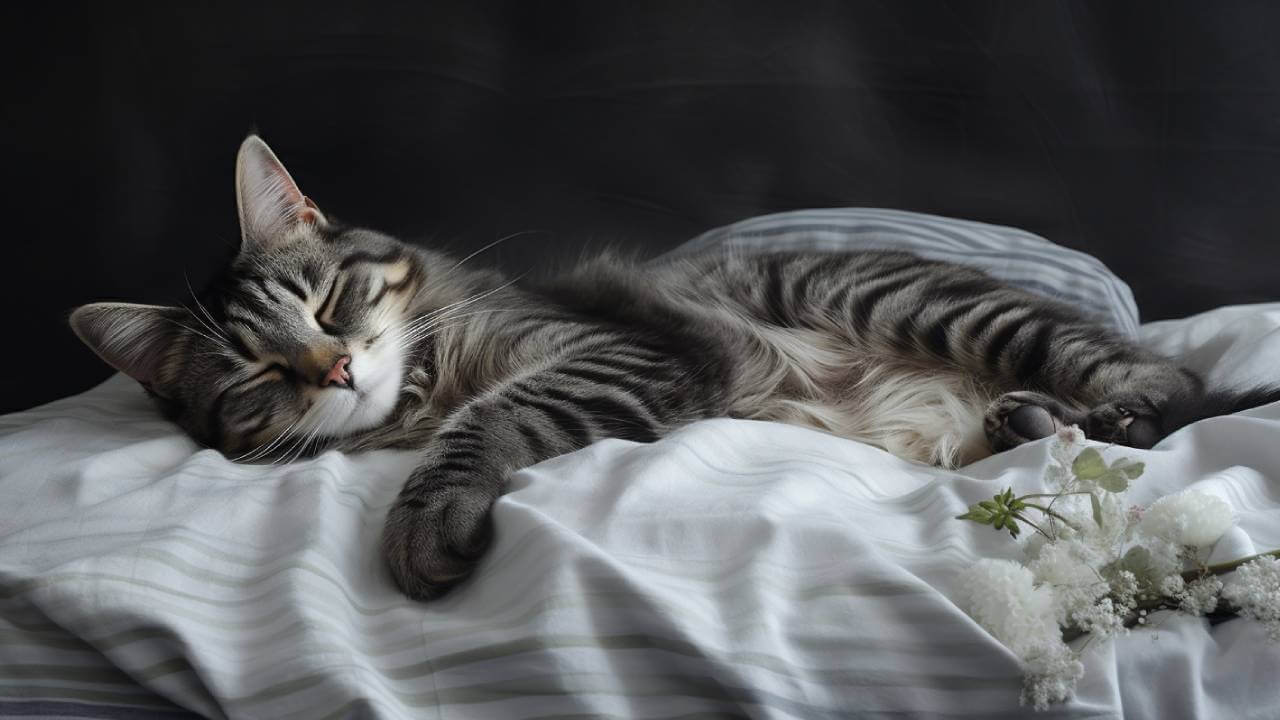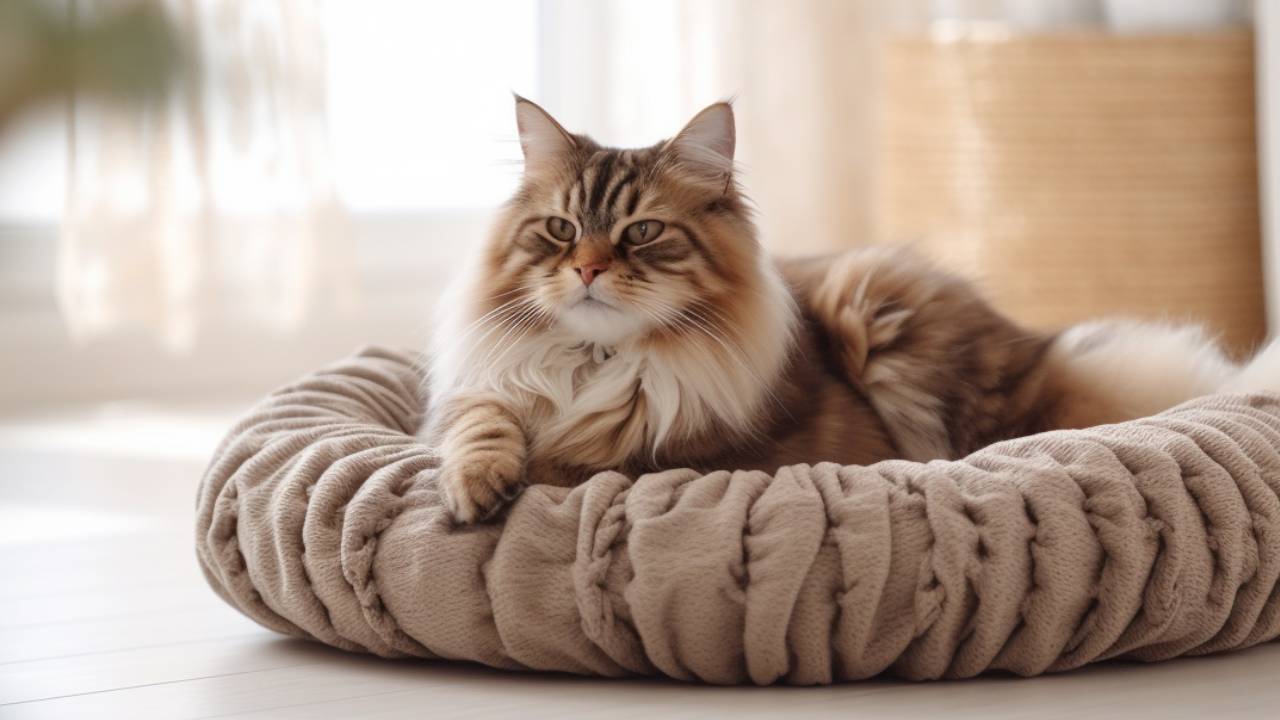Anyone who has had a cat knows that these independent and often mysterious creatures have their ways of doing things, and sleeping spots are no exception. This brings us to an important question: Do cats need beds?
Cats spend an average of 15 hours a day sleeping. With a significant portion of their lives spent in slumber, providing a comfortable resting spot is necessary for their well-being. This article explores why cat beds are essential and how to ensure your feline friend will use the bed you buy.
Why Do Cats Need a Cat Bed
Anyone who has had a cat or is considering adopting from the many kittens for sale knows these cute creatures have their own ways of doing things, including where they sleep.
Like their human companions, cats value comfort and security. A cat bed is a safe haven where your cat can retreat and feel protected. This is especially important in households with multiple pets or young children, where a cat may need a space to escape when feeling overwhelmed or threatened.
Aside from emotional security, cat beds can offer significant health benefits. For older cats or those with arthritis, a well-cushioned bed supports joints and eases discomfort. During colder months, a bed helps maintain body heat, which is crucial since cats are particularly sensitive to temperature changes.
Conversely, a bed in a shaded spot in hot weather can help keep your cat cool and comfortable.
Aside from emotional security, cat beds can offer significant health benefits, such as supporting joints and easing discomfort. This could be particularly relevant if your cat is covered by cat insurance.
Will the Cat Use a Bed?
You won`t know this until you try.
1. First, think about location. Choosing the right spot is crucial in encouraging your cat to use the new bed. Place it in an area where your cat likes to spend time. Ensure it’s away from loud noises and not too close to the litter box.
2. The next step is to observe your cat’s sleeping habits. Do they like to stretch out or curl up? Do they seek warmth or prefer cool surfaces? Answering these questions can help you choose a bed that matches your preferences.
4. Cats love familiarity. Sprinkling the bed with catnip or placing a favorite toy nearby can make the new bed more inviting. You can also try placing a garment with your scent in the bed to provide comfort and familiarity.
If your cat has too many options, they might ignore the new bed. By limiting other comfortable sleeping spots, you can make the new bed the most appealing choice.
Types of Cat Beds
Here are some types of cat beds and their benefits. They might help you to choose the right one:

1. Standard Cat Beds
These are the most common types of cat beds, typically featuring a soft, padded material. They are versatile and can fit in many places around your home. Their softness provides excellent cushioning for cats, making them ideal for all ages.
2. Heated Cat Beds
Heated cat beds are a godsend for senior felines or those in colder climates. They help maintain body warmth, relieving arthritis and other cold-weather discomforts. Safety is paramount with heated beds, so ensure they have a thermostat and are chew-resistant.
Check out our best heated cat beds review for recommendations on specific products.
3. Window Perch Beds
Cats love to bask in the sun and watch the world from a safe viewpoint. Window perch beds attach to the window sill, providing a comfy spot that satisfies this natural behavior. These beds can also alleviate boredom and prevent behavioral issues by engaging your cat’s mind.
4. Enclosed Cat Beds
Some cats prefer hiding away in secluded spaces, and an enclosed cat bed perfectly meets this need. These beds are great for shy or nervous cats, providing a snug area to hide and sleep. For a more interactive option, consider cat tunnel beds, which provide a hideaway and a playful space.
Note: cats have unique personalities, and some may take time to adapt to new things. Try experimenting with different types of beds and placements to find the one that resonates with your cat.
Why Does the Cat Ignore Their Bed?
It’s not uncommon for cats to choose your bed over their designated resting spot. This behavior can be attributed to several factors. Cats are creatures of habit, and if your feline companion has grown accustomed to sharing your bed, breaking that routine might take time.
Your scent also comforts them; they may prefer your bed because it carries your smell. However, you can gradually guide your cat to appreciate its bed with patience and proper encouragement.
While they might occasionally choose your bed over theirs, understanding their instincts and preferences, which can vary among the cutest cat breeds, can help you create an environment where they feel safe and content.

Cats Love Sleep
It’s no secret that cats are sleep lovers. They spend much of their lives in slumber. While their tendency to nap might seem excessive, it’s integral to their nature. Cats are crepuscular creatures, meaning they are most active during dawn and dusk. This unique rhythm results from their ancestral hunting habits. In the wild, cats conserve energy during the day to engage in hunting and exploration during low-light hours.
Like humans, sleep is crucial for a cat’s physical and mental well-being. Cats undergo various stages during sleep, including deep sleep and REM (Rapid Eye Movement) sleep. These stages are essential for healing, memory consolidation, and overall cognitive function.
Providing your cat with a dedicated bed is a thoughtful way to enhance their quality of life. While they might occasionally choose your bed over theirs, understanding their instincts and preferences can help you create an environment where they feel safe and content.

FAQs
What material is best for a cat bed?
The best material for a cat bed depends on your cat’s preferences and any allergies it may have. Generally, materials like fleece or plush are popular because they are soft and retain warmth. However, hypoallergenic materials like organic cotton or microfiber may be better options for cats with allergies. Always look for materials that are easy to clean and maintain.
How often should I replace my cat’s bed?
A cat bed should be replaced when it shows signs of wear such as holes, tears, or fading. Regular washing and inspection can extend the life of a cat bed, but for hygiene and comfort, it’s advisable to replace the bed every 1-2 years or when it becomes soiled or damaged.
Can cat beds help with anxiety in cats?
Cat beds can significantly help reduce anxiety in cats by providing a safe and secure space. Enclosed beds, in particular, can offer a retreat for anxious or shy cats, allowing them a space to hide and feel protected. Additionally, placing the bed in a quiet, low-traffic area can help improve your cat’s sense of security.
How do I clean a cat bed?
Most cat beds come with removable covers that can be machine-washed. For beds without removable covers, vacuuming the bed regularly to remove hair and debris is recommended, followed by spot cleaning with a mild detergent.
What if my cat still prefers my bed over the new cat bed?
If your cat prefers your bed, try placing the new cat bed in your bedroom or even on your bed initially to help them get used to it. Gradually move it to the place you’d prefer them to sleep. Consistently guiding your cat back to its bed and rewarding them for using it can also encourage more frequent use of the cat bed.
References:
- Cats as Pets: Explore the essentials of adopting and caring for a cat.
- The Welfare of Cats: The Need for a Suitable Environment: Understand the importance of creating a conducive environment for your cat’s health and happiness.
- Feline Behavior Problems: Destructive Behavior: Learn about common behavioral problems in cats and how to address them.






My cat has claimed every soft spot in the house as her bed, but I’m curious about getting her a proper cat bed. Are there any benefits to using cat-specific beds? 😺🛏️
Do you recommend any particular types or styles for indoor cats?